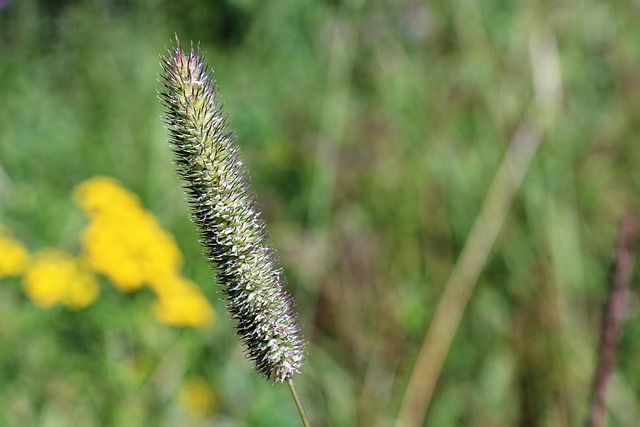 |  |  |   |  |
 |  |
Cat’s-tail is a perennial herb that forms dense lawns. The root system is fringed, well developed, which extends into the soil up to 1m. Stems hollow, erect, single or multiple, up to 1 m tall, with a bulb at the base. The leaves are flat, elongated, pointed, rough, 3-10 mm wide, with naked, uninflated sheaths, dark green in color. The edge of the leaf is toothed.
Vegetation begins in early spring. Cat’s-tail blooms at the end of spring - at the beginning of summer, with small flowers that form an indistinct, cone-shaped cob, 5-12 cm long.
Fruit - covered, rounded oval grain, grayish or brown in color. One inflorescence contains up to 500 grains, a well-developed plant can produce up to 17 thousand seeds. After flowering, Cat’s-tail stems mature and become harder. The seeds mature/grow quickly to form a durable sod. Turf does not lose its color even during winter.
Cat’s-tail contains up to 190 mg of ascorbic acid, about 6 mg of carotene, B1 and B2 vitamins. The plant contains 12 organic acids. Flavonoid dactylin found in pollen, <13% flein in fresh root, tannins.
Medicinal significance
The composition of Cat’s-tail contains many unique components (coumarins, tannins, flavonoids, etc.), which have a wide spectrum of effects. Flavonoids help strengthen blood capillaries, which has a beneficial effect on the cardiovascular system. Ascorbic acid has a beneficial effect on the body in the case of colds caused by viruses, while coumarins have an antimicrobial effect. Tannins normalize digestive processes, stimulate the function of the nervous system and increase the body's performance.
In folk medicine, Cat’s-tail leaves and roots are used as a single agent, as well as as a component of complex mixtures, both for therapeutic and prophylactic purposes. The roots are used as an analgesic, especially for toothache, when applied directly to the aching tooth.
Cat’s-tail are widely used in baths and applications already historically. Folk scientists attribute immunomodulating and antipyretic properties to this plant. Baths of Cat’s-tail decoction are used to treat rheumatic pain, arthritis, arthrosis, radiculitis and skin diseases.
Cat’s-tail is an excellent herb that is used to clean the surface of the teeth. When Cat’s-tail is chewed, it will turn into fine cellulose fibers in the mouth, and Cat’s-tail juice also has an alkaline reaction. Almost or all cereals have this property.
